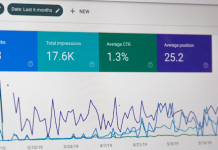The vaping industry has experienced significant growth over the past decade, and with this growth comes the need for manufacturers to optimize their supply chain operations. A well-structured and efficient supply chain is crucial for meeting customer demands, ensuring product quality, and staying competitive in a rapidly evolving market. In this article, we will delve into the world of vape supply chain optimization, exploring strategies that manufacturers can adopt to enhance efficiency, reduce costs, and maintain a competitive edge.
Table of Contents
1. Understanding the Vape Supply Chain
To optimize the supply chain, manufacturers first need to understand its intricacies. The vape supply chain typically comprises several key components:
- Raw Materials Procurement: Manufacturers must source high-quality materials, such as e-liquids, flavorings, hardware components, and packaging materials, often from multiple suppliers.
- Production: This involves assembling and manufacturing vaping devices, mixing e-liquids, and packaging the final products.
- Distribution: The products must be efficiently distributed to retailers, wholesalers, or directly to consumers through various channels.
- Inventory Management: Maintaining the right inventory levels is crucial to balancing supply and demand while minimizing storage costs.
- Retail and Customer Experience: The final stage of the vape supply chain is the retail and customer experience. This includes the availability of vape products in physical stores or online platforms, marketing and promotion strategies, customer service, and post-sales support.
2. Challenges in the Vape Supply Chain
While the vape industry presents numerous opportunities, it also poses unique challenges for manufacturers and suppliers. Understanding and addressing these challenges is crucial for optimizing the vape supply chain:
- Public Perception: Negative perceptions and misinformation about vaping can affect consumer demand and regulatory decisions.
- Flavor Bans: Some regions have implemented bans on flavored vaping products due to concerns about their appeal to minors. These bans can significantly impact manufacturers and retailers specializing in flavored products, leading to revenue losses and shifts in consumer preferences.
- Quality Control and Safety: Maintaining consistent product quality and safety is essential in the vape industry. Manufacturers need to implement rigorous quality control processes to ensure that every product meets the highest standards and minimizes the risk of potential health hazards.
- Environmental Concerns: The disposal of used vape products, including batteries and cartridges, can contribute to environmental pollution. Hence the need for proper, sustainable vaping products.
- Age Verification: Ensuring that vaping products are not sold to minors is a priority for regulators. Implementing effective age verification processes in both physical and online retail settings can be challenging and resource-intensive.
- Counterfeit Products: The vape industry has also been plagued by the presence of counterfeit products in the market. Manufacturers must implement robust anti-counterfeiting measures to protect their brand reputation and ensure that consumers are purchasing genuine, safe products.
3. Supply Chain Optimization Strategies
To overcome the challenges and optimize the vape supply chain, manufacturers and suppliers can implement the following strategies:
- Demand Forecasting: Accurate demand forecasting is the cornerstone of supply chain optimization. Manufacturers can leverage historical sales data, market trends, and consumer preferences to predict future demand. Advanced forecasting tools and software can assist in this process.
- Supplier Relationship Management: Building strong relationships with suppliers is essential. Collaborative partnerships can lead to favorable terms, better pricing, and a more reliable supply of materials.
- Lean Manufacturing: Implement lean manufacturing principles to eliminate waste, reduce lead times, and improve production efficiency. This can be achieved through techniques such as just-in-time manufacturing and continuous improvement.
- Quality Control: Implement rigorous quality control processes to minimize defects and returns. Maintaining high product quality reduces the risk of disruptions in the supply chain.
- Inventory Optimization: Employ inventory management software to maintain optimal stock levels. Excess inventory ties up capital and space, while insufficient inventory can lead to missed sales opportunities.
- Route Optimization: Optimize delivery routes to reduce transportation costs and delivery times. This can be achieved through route planning software and real-time tracking.
- Technology Integration: Embrace technology solutions such as RFID (Radio-Frequency Identification) for tracking inventory and IoT (Internet of Things) devices for monitoring equipment and product conditions.
- Sustainability Initiatives: Incorporating sustainability and ethical practices into the supply chain can enhance brand reputation and attract environmentally conscious consumers. Implement eco-friendly practices in the supply chain to reduce environmental impact and meet evolving regulatory requirements. For example, URTH2 disposable vapes by Aveo is taking the industry to a whole new level by providing users with an unmatched vaping experience. Its advanced technology, reliable construction, and eco-friendly design make it stand out from other disposable vapes in the market.
- Customer-Centric Approach: Adopting a customer-centric approach is key to success in the vape industry. Manufacturers should focus on understanding customer preferences, gathering feedback, and continuously improving products and services to meet evolving consumer needs.
4. The Role of Data Analytics
Data analytics plays a pivotal role in supply chain optimization. By harnessing the power of data, manufacturers can gain insights into various aspects of their supply chain, such as demand patterns, production efficiency, and supplier performance. Advanced analytics can identify areas for improvement and help in making data-driven decisions.
5. Continuous Improvement
Supply chain optimization is not a one-time effort but an ongoing process. Manufacturers should regularly review and refine their strategies, adapting to changing market dynamics, technological advancements, and customer preferences.
Conclusion
Optimizing the vape supply chain is crucial for manufacturers and suppliers to meet the growing demand and ensure customer satisfaction. By understanding the key components of the supply chain, addressing challenges, and implementing effective strategies, vape businesses can enhance efficiency, quality, and overall success in this dynamic industry. Embracing collaboration, leveraging technology, and prioritizing compliance and customer-centricity are key pillars of vape supply chain optimization. By continuously improving processes and embracing sustainable practices, manufacturers can stay ahead in this ever-evolving market.








